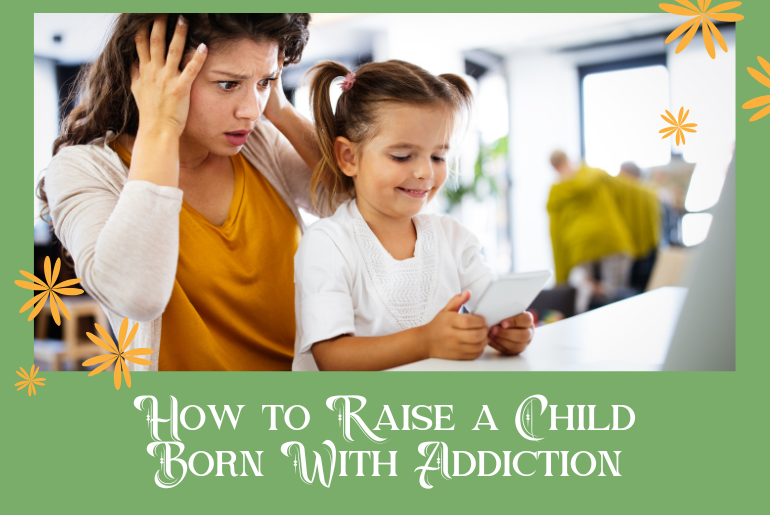The bond between a parent and a child is a beautiful, unique connection that can shape a child’s development significantly. As we dive into the fascinating realm of toddler psychology, one intriguing question arises: Can a toddler form a bond with a parent who’s only present every couple of months? Yes. It’s possible, but it demands conscious efforts, specific strategies, and ample patience to nurture this kind of relationship.
Understanding Toddler Attachment

Before we delve into this topic further, it’s essential to comprehend what attachment really means in the context of child development. Attachment refers to a deep emotional bond formed between a child and their caregivers, and it plays a crucial role in shaping the child’s social, emotional, and cognitive growth.
According to the British psychoanalyst John Bowlby, the pioneer of attachment theory, infants need to develop a relationship with at least one primary caregiver for their successful social and emotional development. This relationship often develops through consistent, nurturing interactions.
Table: Common Types of Attachment
Attachment Type | Description |
Secure Attachment | Child feels safe and secure, often the result of responsive and consistent caregiving. |
Avoidant Attachment | Child tends to avoid or ignore the caregiver, often due to unresponsive or dismissive caregiving. |
Anxious Attachmentent | Child becomes very distressed when caregiver leaves and may act clingy, often due to inconsistent caregiving. |
Disorganized Attachment | Child displays an array of erratic behaviors, often resulting from erratic or disorganized caregiving. |
Reasons a Toddler Forms a Bond with A Parent He Sees Every Couple of Months
Navigating the intricacies of toddler-parent bonding can be a nuanced journey, especially when physical presence is not an everyday luxury. Below, we’ll explore several key reasons why a toddler can form a bond with a parent they see only every couple of months.

1. Quality of Interaction
The old adage “quality over quantity” rings especially true in toddler-parent bonding. When a parent sees their toddler infrequently, each moment of interaction becomes precious and potentially impactful. Engaging in activities that the child enjoys, showing genuine interest in their world, and demonstrating warmth and love can create a deep bond over time. This can often counterbalance the effects of infrequent physical presence.
2. Emotional Security
Despite infrequent visits, a parent can provide emotional security to their toddler. This is achieved by being a constant source of support, listening to their fears, feelings, and experiences, and providing comfort. Even if this interaction is virtual most of the time, the emotional bond created can be powerful and long-lasting.
3. Familiarity Through Routine
Routines are essential in a toddler’s world, providing predictability and a sense of safety. A parent who manages to establish a consistent routine during their visits introduces a sense of familiarity. Over time, the toddler begins to associate these routines and rituals with the visiting parent, fostering a unique bond.
4. Technological Interaction
In the age of technology, physical distance can be significantly minimized through video calls, online games, and other forms of digital interaction. A parent might read a bedtime story over a video call, watch a movie together online, or play a virtual game. These regular technological interactions can facilitate bonding despite physical distance.
5. Expressing Affection
Even if infrequent, physical expressions of affection like hugs and kisses can have a lasting impact on a toddler. This, coupled with verbal affirmations of love and care, can foster a strong bond. The toddler will remember these expressions of affection and tend to hold on to them, associating them with the visiting parent.
Challenges of Limited Contact Between Toddlers and Their Parents
The potential challenges of limited contact between toddlers and their parents form a crucial part of this discussion. Although meaningful bonds can still be established with concerted effort, parents and toddlers alike may face several hurdles along the way.

1. Difficulty in Establishing Routine
Routine is a vital component of a toddler’s life. It provides structure and a sense of safety. When a parent can only visit occasionally, it may disrupt the child’s routine, causing confusion or distress. Moreover, establishing a consistent routine during these infrequent visits might prove challenging.
2. Delayed Attachment Development
John Bowlby’s attachment theory underscores the importance of consistent and responsive care for a secure attachment style. Infrequent visits might potentially delay the development of this attachment, as the toddler has less time to learn that they can rely on the visiting parent for support and care.
3. Emotional Distress
Toddlers may experience emotional distress due to the infrequency of visits. Feelings of abandonment, confusion, and longing might emerge, especially if the toddler is unable to fully comprehend why the parent isn’t around as much as they’d like.
4. Difficulty in Communication
Effective communication can be challenging when face-to-face interactions are limited. This can be especially tough with toddlers who are still developing their language skills and might not be fully comfortable with video calls or other forms of digital communication.
5. Strained Parent-Child Relationship
There is also a risk of strain on the parent-child relationship. Parents may feel guilt or sadness due to their limited presence, which could in turn affect their interaction quality. Similarly, toddlers may react differently each time the parent visits, from excessive clinginess to avoidance, as a response to the irregular pattern of meetings.
Tips for Improving Those Challenges
Navigating the challenges associated with limited contact between toddlers and their parents requires understanding, patience, and strategic planning. Here are some practical tips to help address these obstacles and cultivate a stronger bond:
1. Establishing a Consistent Routine
Establish a routine during your visits that can be continued even when you’re not physically present. This could include specific meal times, reading a bedtime story, or even a special handshake before bed. This consistency can help provide a sense of security and predictability for the toddler.
2. Fostering Secure Attachment
Even though physical presence might be infrequent, ensure that you’re emotionally available for your toddler. Show them that they can rely on you for comfort and support. This can be done through regular video calls, messages, or even letters that assure your child of your love and care.
3. Providing Emotional Support
Emotional distress can be mitigated by providing ample emotional support. Be there to listen to their feelings, validate them, and reassure them of your love. Children’s books dealing with themes of distance or separation can also be a valuable tool to help toddlers understand and cope with their feelings.
4. Effective Use of Technology
Make the most out of technology to bridge the communication gap. Regular video calls, digital story times, online games, or shared activities can foster interaction and bonding. For younger toddlers still developing language skills, simply seeing and hearing you through these platforms can help maintain familiarity and connection.
5. Nurturing the Relationship
Ensure that the time spent together is positive and enjoyable. Engage in fun activities, offer undivided attention, and encourage open communication. Try to leave any feelings of guilt or sadness aside during these interactions to ensure that your time together is as positive and memorable as possible.
The Role of Consistent Interaction in Bond Formation
The bond formation is not solely a product of biological relationships or physical presence. More so, it’s the quality and consistency of interactions that primarily influence bond formation.
A parent who is physically present but emotionally distant or inconsistently available might struggle to form a strong bond with their toddler. On the contrary, a parent who only visits every few months but makes the most of this time by engaging the child in attentive, loving, and meaningful interactions can indeed foster a significant bond.
Strategies to Maintain a Bond Despite Infrequent Visits
If circumstances dictate that a parent can only see their toddler every couple of months, there are strategies to help maintain and even strengthen the parent-child bond.

- Maximize Your Visit Time: Make the most of the time you spend together. Engage in activities your child enjoys and show genuine interest in their world.
- Maintain Regular Communication: Thanks to technology, video calls can help bridge the distance. Storytime, playing games, or just chatting about their day can help maintain the connection.
- Consistent Routine: During visits, establish and follow a predictable routine to provide a sense of security and consistency.
- Express Love and Affection: Always express your love and affection, verbally and physically. Hugs, kisses, and words of love go a long way in establishing a strong bond.
FAQs
At what age do toddlers get attached to moms?
Toddler attachment to their mom usually begins to develop around six months of age, but it continues to strengthen and evolve throughout the toddler years and beyond.
How long can a 2-year-old be away from their parents?
There’s no universally agreed-upon length of time, as it largely depends on the child’s temperament, their relationship with the caregiver, and how used they are to separations. However, shorter separations of a few hours to a couple of days are usually more comfortable for a 2-year-old.
How do I know if my toddler has bonded with me?
Signs of a strong bond include your toddler seeking comfort from you when upset, displaying happiness when you return after being away, showing trust in your care, and engaging in interactive games or activities with you.
How long does it take for a child to bond?
Bonding can start as early as in the womb for some parents and children, but it often strengthens over time. For some, the bond is immediate, while for others, it might take a few weeks or months. It’s a unique and personal process that can vary widely.
Conclusion
While physical presence and frequency of interaction undoubtedly play a role in the bond formation between a parent and a toddler, they aren’t the sole determinants. Quality and consistency of interaction, expression of love and affection, and maintaining a consistent routine during visits are equally, if not more, important. Thus, even if a parent can only see their toddler every couple of months, a strong bond can still be formed with conscious effort and specific strategies.

Dedicated father, an accomplished psychologist, and an experienced educationist. With a passion for guiding parents on the rewarding journey of raising children, I am the perfect companion for all your parenting needs. My insightful and practical advice, coupled with my wealth of experience, makes me the go-to expert for all matters related to parenting. Follow this blog for a glimpse into the world of effective parenting and learn how to navigate the ups and downs of this beautiful journey with confidence and grace.




